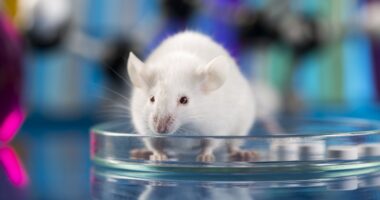Cannabidiol Precursor Results in Anti-seizure Effects in Early Study

Olivetolic acid, a precursor of cannabidiol (CBD), resulted in protective effects against fever-induced seizures in a mouse model of Dravet syndrome, a study shows.
These effects were comparable to those previously reported with CBD in this model, suggesting that olivetolic acid may have the potential to reduce seizures in Dravet and other seizure-related disorders.
More studies are needed to better understand the molecule’s mechanism of action and whether it protects against other seizure types, researchers noted.
The study, “Olivetolic acid, a cannabinoid precursor in Cannabis sativa, but not CBGA methyl ester exhibits a modest anticonvulsant effect in a mouse model of Dravet syndrome,” was published in the Journal of Cannabis Research.
The cannabis plant, containing more than 140 natural cannabinoids, has been used to treat epilepsy and routinely prescribed by physicians for this indication prior to prohibition. Cannabinoids are chemical messenger molecules that bind to cannabinoid receptors in the brain and body, regulating several body functions.
GW Pharmaceuticals’ Epidiolex — a purified oral form of CBD, the major non-psychoactive cannabinoid in the cannabis plant — has been approved in the U.S. and Europe for seizures associated with Dravet syndrome and Lennox‑Gastaut syndrome, another type of severe childhood epilepsy.
However, continuous use of unregulated cannabis-based artisanal products, often containing low CBD levels, for the treatment of epilepsy raises the question of whether other cannabinoids may have greater anti-seizure potential.
A previous study by researchers in Australia showed that cannabigerolic acid (CBGA), a major precursor of CBD, protected against spontaneous seizures and those induced by high temperatures (hyperthermia) in a mouse model of Dravet. These effects were greater than those previously reported for CBD in this model.
However, “poor brain penetration and chemical instability of CBGA limits its potential as an [anti-seizure] therapy,” the researchers wrote.
Now, the same team evaluated whether CBGA methyl ester — a more stable version of CBGA — and olivetolic acid, a precursor of CBGA, had better pharmacological and anti-hyperthermia-induced seizure properties in the same mouse model.
These mice lacked one copy of the SCN1A gene, which is mutated in most Dravet cases, and showed key features of the disease, such as the susceptibility to hyperthermia-induced seizures, or febrile seizures.
The animals received CBGA methyl ester or olivetolic acid at a dose of 10, 30, or 100 mg/kg of body weight, similar to the doses used for CBGA in the prior study.
Results showed that both molecules had limited ability to reach the brain, with CBGA methyl ester showing a brain exposure of 13% and olivetolic acid 1%. Still, CBGA’s stable version exhibited a greater brain penetrance than GBGA (2%) in the previous study, suggesting that it could lead to greater therapeutic effects.
However, treatment with CBGA methyl ester “had no effect on hyperthermia-induced seizures at any dose tested,” the team wrote.
In contrast, olivetolic acid showed a modest, but significant, anti-seizure effect at a dose of 100 mg/kg. Specifically, it increased the temperature threshold animals were able to withstand without experiencing any hyperthermia-induced seizures by about 0.4 C (0.72 F).
This was “comparable to the approximately 0.5°C temperature threshold increase elicited by 100 mg/kg CBD” in a previous study using the same mouse model, the researchers wrote.
Still, it was smaller than the nearly 1 C raise in temperature threshold previously achieved with CBGA at the same dosage.
Further analyses in lab-grown human cells showed that neither CBGA methyl ester nor olivetolic acid interacted with two known CBGA’s seizure-relevant targets — G-protein-coupled receptor 55 and T-type calcium channels — suggesting that olivetolic acid’s benefits may involve other molecules.
Future studies are needed to better understand the mechanism of action of olivetolic acid, and whether it acts on other seizure-relevant targets common to CBD and CBGA, such as GABAA receptors, TRPV1, and voltage-gated sodium channels.
The researchers noted that it is also possible that olivetolic acid’s anti-seizure effects could be driven by an active metabolite, or byproduct, of the molecule.
More research “could determine the metabolic profile of olivetolic acid and explore time-dependent studies to assess the anticonvulsant [anti-seizure] potential of possible metabolites,” the team wrote.
It could also “examine whether the anticonvulsant activity of olivetolic acid extends to other animal models of epilepsy,” the researchers added.
The results also suggested that a specific chemical region, called carboxylic acid moiety, may be important for the anti-seizure effects of cannabinoids, since CBGA and olivetolic acid have it, but CBGA methyl ester does not.
However, this region is very unstable and is thought to be responsible for the low brain penetrance of these molecules, presenting “a challenge for the development of these [cannabinoids] as mainstream pharmaceuticals,” the researchers wrote.
Future work could focus on potential chemical modifications to improve the physicochemical properties, brain penetrance, and stability of these cannabinoids, they added.









